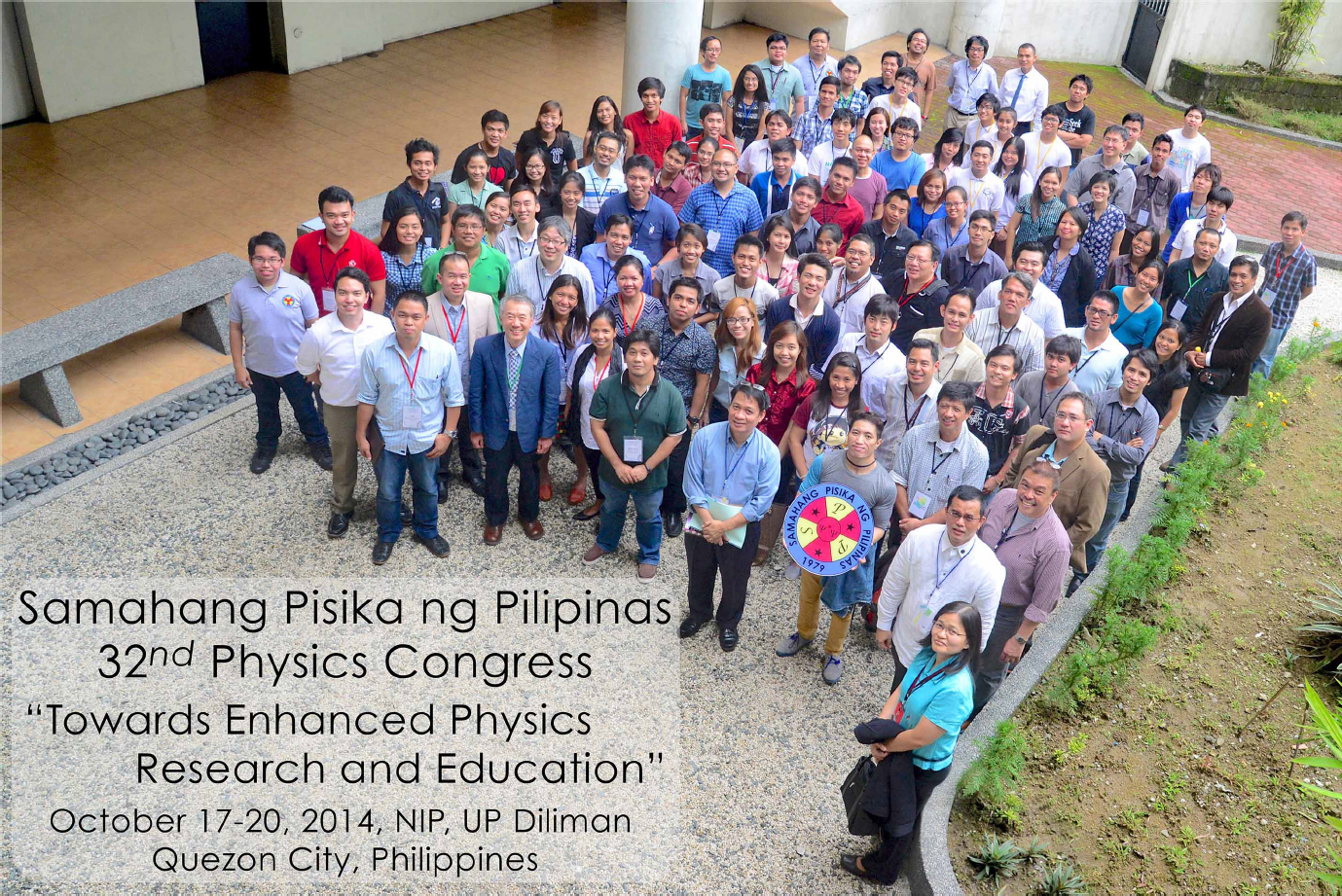(NOV. 6, National Institute of Physics)—The National Institute of Physics (NIP) of the College of Science co-sponsored the 32nd Physics Congress of the Samahang Pisika ng Pilipinas (SPP) from Oct. 17 to 20 at the NIP Intel Center for Science Innovation.
In his opening remarks, NIP Director Roland V. Sarmago emphasized the importance of the partnership with the SPP. He said the SPP provides NIP researchers a venue for intellectual discourse, sharing of ideas as well as an opportunity for scientific leadership. Together, NIP and SPP have a shared commitment to advance scientific knowledge.
With this year’s theme “Towards Enhanced Physics Research and Education,” the Congress showcased and celebrated more than 120 accepted papers and 14 invited talks in pure and applied physics, including a physics education workshop. Via an online peer review process, the submitted papers underwent meticulous scrutiny by the reviewers based on the following criteria: novelty and significance of work, impact on the field of study, soundness of conclusions and clarity of presentation.
Based on research areas, the distribution of the accepted papers was as follows: Condensed Matter Physics (30%), Theoretical and Computational Physics (25%), Optics and Signal Processing (19%), Complex Systems and Atmospheric Physics (14%), Plasma/ Photonics/ Terahertz (11%), and Physics Education (1%).
The plenary and sub-plenary presentations featured a line-up of high profile foreign and local scientists working in various physics sub-disciplines. The plenary speakers, their presentations and affiliations were: 1. Dr. Elmer Estacio (Ultrafast Terahertz Photonics Research: Its feasibility in the Philippine Setting, UPD-NIP, Philippines) 2. Prof. Tsutomu Araki (In vivo visualization of collagen fiber in human skin with femtosecond laser, Osaka University, Japan) 3. Dr. Gay Jane Perez (Physics for Environmental Monitoring and Prediction, IESM, UPD, Philippines) 4. Prof. Arnaud Videcoq (Structure of ceramic colloidal suspensions: simulations and experiments, Cen. Euro. de la Ceramique, France) 5. Prof. Yasuhiro Kobori (Electron-Hole Dissociations Influenced by Alkyl Side Chains in the Photovoltaic Polyalkylthiophene: PCBM Interface, Kobe University, Japan) 6. Prof. Henry Ramos (Beyond the fourth state of matter: plasmas from academe to industry, UPD-NIP, Philippines)
The sub-plenary speakers, their presentations and affiliations include: 1. Prof. Albert De Roeck (Physics Results from the Large Hadron Collider at CERN, Compact Muon Solenoid CERN, Geneva) 2. Dr. Mamoru Hashimoto (Nonlinear Raman imaging using fast tunable picosecond laser, Osaka University, Japan) 3. Dr. Taro Ichimura (Label-free optical imaging to quantify the quality in biological complex systems, Laboratory for Comprehensive Bioimaging, RIKEN, Japan) 4. Dr. Marvin Albao (Computations on the Cheap: Applications of Kinetic Monte Simulations to Surface Science Problems, IMSP-CAS, UP Los Baños, Philippines) 5. Dr. Almar F. Palonpon (Seeing molecules in live cells by Raman microscopy, Photonics Advanced Research Center, Osaka University, Japan) 6. Prof. Luca Baiotti, “General-relativistic simulations of binary neutron-star mergers: Gravitational waves and gamma-ray bursts on supercomputers, Graduate School of Science, Osaka University, Japan).
The physics education workshop was comprised of two talks. Dr. Giovanni Tapang of the UP-VISSER (Versatile Instrument System for Science Education and Research) gave the presentation “Putting modern science labs at every school and college”. The Stray Cats Group from Aichi, Japan led by Professor Junji Fujita conducted “Lively Physics and Exciting Experiments” that featured more than 50 interactive table-top physics demonstrations ranging from mechanics, electromagnetism, to plasma physics and detection of cosmic rays.
Special awards were given to the best scientific posters presented during the conference poster sessions A and B. The criteria for judging include scientific content, originality and design. For poster session A, the best scientific poster was based on the paper “Efficiency enhancement of p-n heterojunction GaAs solar cells via wet chemical etching and pattern design of metal contact” by Philippe Tingzon, et. al from NIP. For poster session B, the best scientific poster was based on the paper entitled “Photoluminescence Studies of Silver-doped and Magnesium-doped Zinc Oxide Thin Films on Silicon Prepared by Intermittent Spray Pyrolysis” by Jefferson M. Abrenica, et. al from NIP, UPD and Osaka University.
Special prizes were also handed to the authors of winning entries in the Best Artistic- Scientific Image contest. The image entries which have connection to physics could be in original format or nominally processed and were judged based on scientific significance and/or artistic-visual impact. The best image was the entry “Flowers that Cleanse” showing flower-shaped Zinc Oxide microstructures submitted by Richard Dean Yadao, Alipio Garcia, Ian Jasper Agulo, and Yoshitaka Matsushita of the College of Science, UP Baguio. Joshua Beringuela and Wilson Garcia of NIP, submitted the runner up entry called “Cute Little Plasma Muffins” showing different states of argon gas in a discharge tube at varying pressures and voltages. The best and runner up images landed, respectively, on the front and back cover pages of the conference handbook.
Because of the UP and other universities’ shift in the academic calendar, next year’s congress will be from June 3 to 6. SPP president Dr. May Lim shared the sentiment of the Samahan when she said the calendar shift brings in new challenges but it is also full of tantalizing possibilities. The next physics congresses are envisioned as prime venues where a good mix of foreign and local researchers can exchange ideas, initiate collaborative and interdisciplinary work and engage in discussions pertaining to relevant educational and developmental issues.
Dr. Wilson Garcia, Chair of Scientific Program Committee and incoming SPP President, thanked everyone who presented their work, the SPP Editorial Board for maintaining the high quality of accepted papers, the NIP for the strong partnership with SPP, the organizing committee and all the attendees for making the Congress possible.

